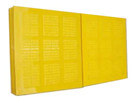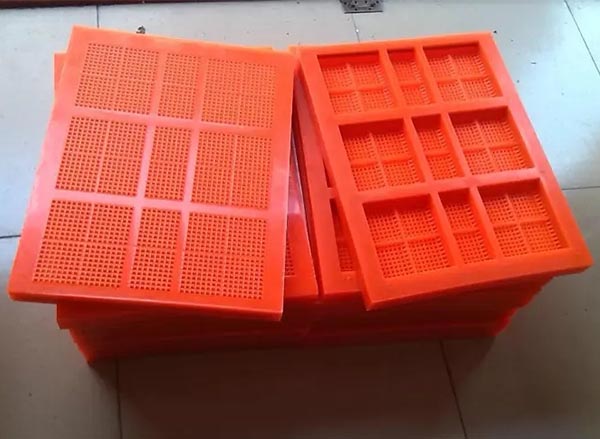Hot Product

- Hydrocyclone Group
Hydrocyclone group is widely used in coal preparation plant...

- Slurry Pump
Slurry pump is mainly used in mining, power plant, dredging, metallurgy...

- Polyurethane Dewatering Screen Panel
In addition to the performance of...
Technical Parameters Of Polyurethane Screen Plate
Date: 2025-05-13 From: Longding Author: admin
Polyurethane screen plate is an important equipment commonly used in the field of screening and filtration. Its performance parameters have an important impact on the efficiency and effectiveness of the screening process. The following introduces the technical parameters of the polyurethane screen plate, including pore size, porosity, thickness, hardness, and other aspects.

Technical parameters of the polyurethane screen plate
1. Aperture
Aperture is an important technical parameter of polyurethane sieve plates, which determines the screening effect and accuracy of the sieve plate for materials. The aperture is usually expressed in millimeters or microns, and the common aperture ranges from 0.1mm to 100mm. For materials that require fine screening, a sieve plate with a smaller aperture should be selected; for materials that require coarse screening, a sieve plate with a larger aperture can be selected.
2. Porosity
Porosity refers to the ratio of the open area on the surface of the polyurethane screen plate to the total surface area, which determines the permeability and screening efficiency of the screen plate. The porosity is usually expressed as a percentage, and the common porosity ranges from 10% to 60%. The higher the porosity, the better the permeability of the screen plate and the higher the screening efficiency; while the screen plate with a lower porosity is suitable for screening work that needs to retain finer particles.
3. Thickness
Thickness is another important technical parameter of polyurethane sieve plates, which determines the strength and durability of the sieve plates. Thickness is usually expressed in millimeters, and common thicknesses range from 2mm to 50mm. For screening work that needs to withstand greater impact or wear, thicker sieve plates should be selected to increase their durability; while for general screening work, thinner sieve plates can meet the needs.
4. Temperature resistance
Heat resistance is an important technical parameter of polyurethane sieve plates, which determines the service life and performance stability of the sieve plates in high temperature environments. Polyurethane sieve plates usually have good temperature resistance and can work normally in the temperature range of -40℃ to 80℃. For work that requires screening in high temperature environments, polyurethane sieve plates with higher temperature resistance can be selected.
5. Corrosion resistance
Corrosion resistance is an important technical parameter of polyurethane sieve plates, which determines the service life and performance stability of sieve plates in corrosive liquid or gas environments. Polyurethane sieve plates usually have good corrosion resistance and can work normally in environments with corrosive substances such as acids and alkalis. For work that requires screening in a corrosive environment, polyurethane screen plates with better corrosion resistance can be selected.
When choosing a polyurethane sieve plate, you should reasonably select parameters such as aperture, opening rate, thickness, hardness, etc. according to the characteristics of the material and the screening requirements. You should also pay attention to the technical parameters of the sieve plate in terms of temperature resistance and corrosion resistance to ensure the stability and durability of the sieve plate in special environments. By reasonably selecting and using polyurethane sieve plates, you can improve screening efficiency, reduce production costs, and achieve better screening effects.
Previous:Application Of Heavy Medium Cyclone In Coal Preparation Industry
Next:The Production Process Requirements Of Polyurethane Screen Plates
Leave a Message
Here you can submit any questions and we will get back to you as soon as possible. We will not disclose the information you submit to anyone, please rest assured.


Inquiry